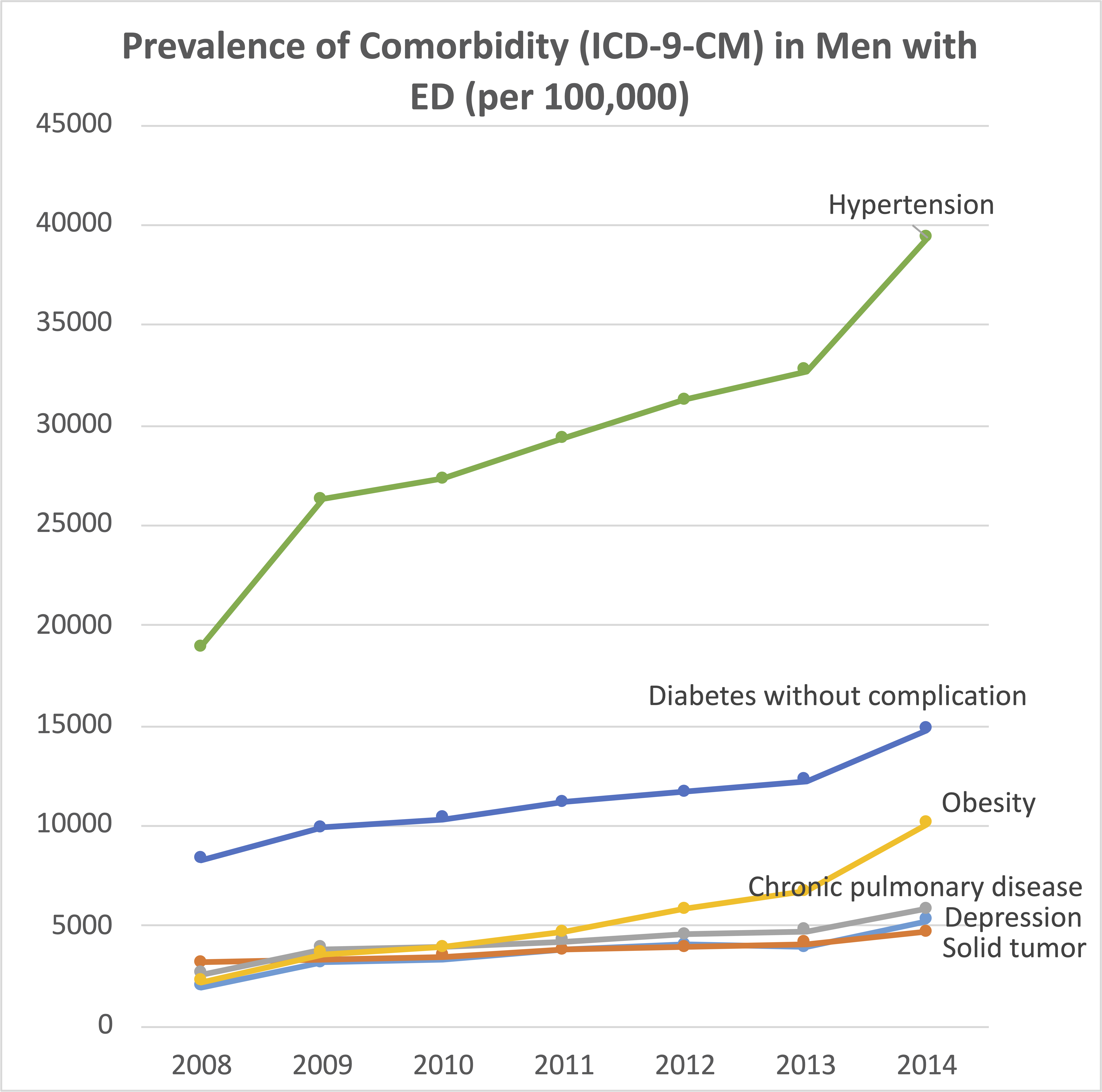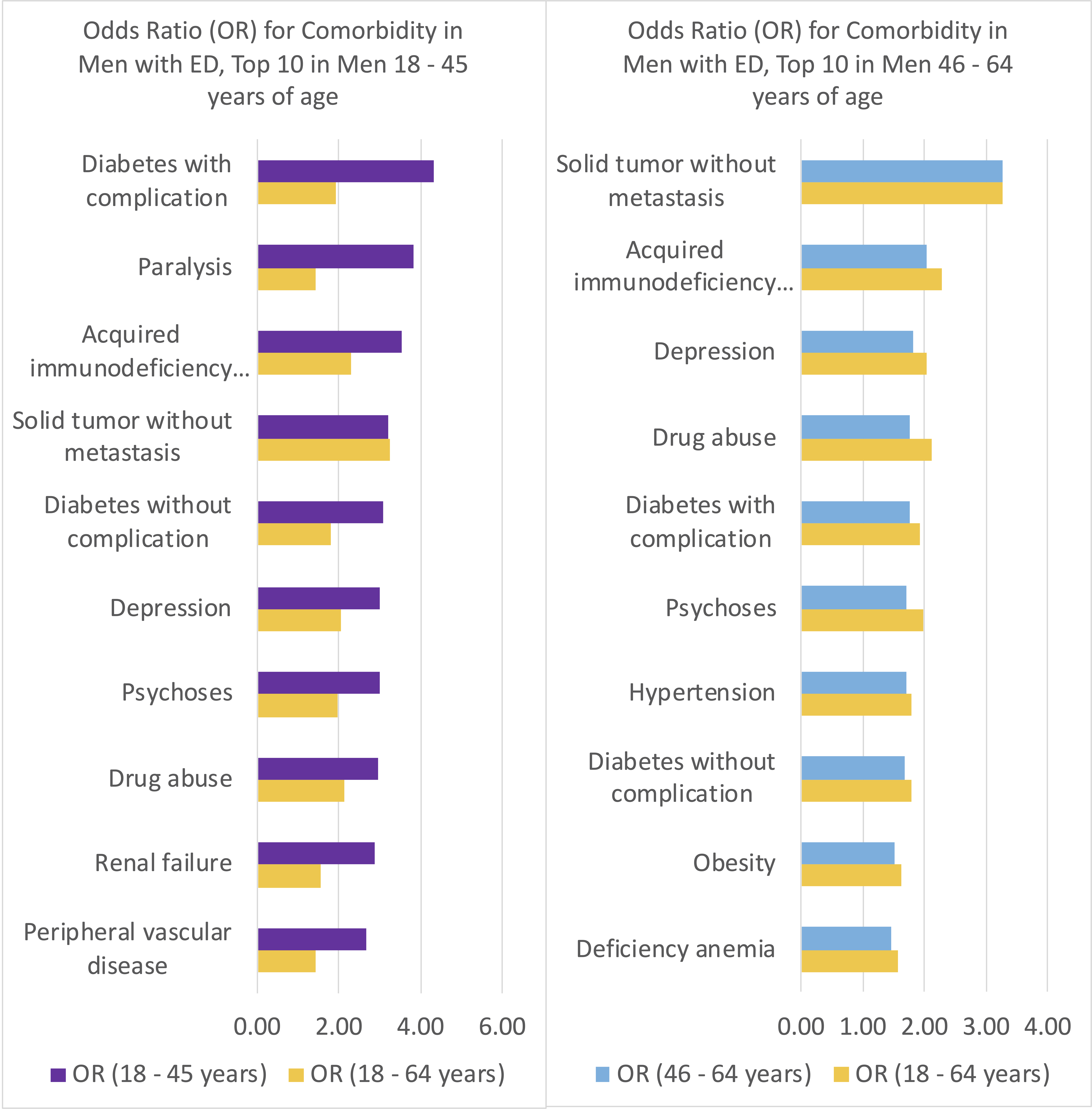Back
Poster, Podium & Video Sessions
Moderated Poster
MP21: Sexual Function/Dysfunction: Evaluation I
MP21-01: Contemporary Comorbidity Profile of Men with Erectile Dysfunction
Saturday, May 14, 2022
7:00 AM – 8:15 AM
Location: Room 222
Garrick Greear*, Tristan Nicholson, Sarah Holt, Marah Hehemann, Hunter Wessells, Thomas Walsh, Seattle, WA

Garrick Greear, MD
University of Washington
Poster Presenter(s)
Introduction: The modern understanding of the comorbidities associated with erectile dysfunction (ED) was shaped by decades-old survey-based epidemiologic studies. The demographics and comorbidities of the United States population have since changed. A contemporary assessment of the comorbidity profile of men with ED is timely and indispensable for the efficient care of these men.
Methods: A cross-sectional analysis of the MarketScan® administrative claims database from 2008 to 2019 was performed. Inclusion criteria were men 18 to 64 years of age with a diagnosis of ED or phosphodiesterase type 5 inhibitor (PDE5i) prescription with =1 year of enrollment, as well as age-matched controls without an ED diagnosis or related prescription. Comorbidities were extracted by ICD-9/10 diagnosis codes and categorized by the Elixhauser Comorbidity Index. The trends in prevalence of comorbidities and odds of comorbidity diagnosis, overall and by age group, were analyzed.
Results: The prevalence of all comorbidities in men with and without ED increased over the study period. The five most prevalent comorbidities (and percentage increase) among men with ED were hypertension (108%), diabetes (78%), obesity (357%), chronic pulmonary disease (124%), and depression (164%). The association of ED with comorbidities such as complicated diabetes and paralysis was more pronounced among younger men (age 18-45 years vs 46-64 years).
Conclusions: The comorbidity profile of men with ED has evolved since its initial characterization nearly 30 years ago. Increases in diseases associated with obesity and metabolic syndrome, as well as mental health disorders, are particularly notable. The findings illustrate the complex interplay of chronic health conditions in men with ED, and serve to justify the comprehensive evaluation of all men who present with ED.
Source of Funding: None



Methods: A cross-sectional analysis of the MarketScan® administrative claims database from 2008 to 2019 was performed. Inclusion criteria were men 18 to 64 years of age with a diagnosis of ED or phosphodiesterase type 5 inhibitor (PDE5i) prescription with =1 year of enrollment, as well as age-matched controls without an ED diagnosis or related prescription. Comorbidities were extracted by ICD-9/10 diagnosis codes and categorized by the Elixhauser Comorbidity Index. The trends in prevalence of comorbidities and odds of comorbidity diagnosis, overall and by age group, were analyzed.
Results: The prevalence of all comorbidities in men with and without ED increased over the study period. The five most prevalent comorbidities (and percentage increase) among men with ED were hypertension (108%), diabetes (78%), obesity (357%), chronic pulmonary disease (124%), and depression (164%). The association of ED with comorbidities such as complicated diabetes and paralysis was more pronounced among younger men (age 18-45 years vs 46-64 years).
Conclusions: The comorbidity profile of men with ED has evolved since its initial characterization nearly 30 years ago. Increases in diseases associated with obesity and metabolic syndrome, as well as mental health disorders, are particularly notable. The findings illustrate the complex interplay of chronic health conditions in men with ED, and serve to justify the comprehensive evaluation of all men who present with ED.
Source of Funding: None




.jpg)
.jpg)